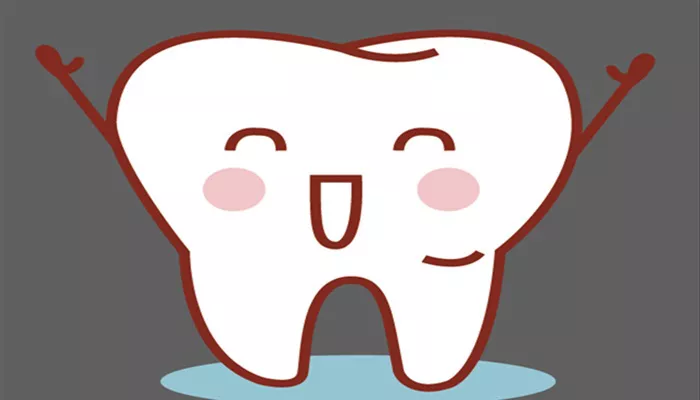Orthodontic toothbrushes are specifically designed to cater to the unique needs of individuals undergoing orthodontic treatment. These toothbrushes are engineered to effectively clean teeth, braces, and other orthodontic appliances, ensuring optimal oral health during this period. Choosing the right orthodontic toothbrush is crucial for maintaining proper dental hygiene and preventing complications associated with orthodontic treatment. This guide will provide a detailed introduction to orthodontic toothbrushes, highlighting their features, types, and considerations for selecting the most suitable option.
Understanding Orthodontic Toothbrushes
Orthodontic toothbrushes differ significantly from traditional toothbrushes. They are specifically tailored to address the challenges posed by braces, retainers, and other orthodontic appliances. The design of orthodontic toothbrushes focuses on several key aspects:
Brush Head Shape and Size
Small Brush Heads: Orthodontic toothbrushes typically have smaller brush heads compared to regular toothbrushes. This allows for better access to hard-to-reach areas, such as the back molars and areas around braces and wires. Smaller brush heads make it easier to maneuver around orthodontic appliances, ensuring thorough cleaning.
Specialized Shapes: Some orthodontic toothbrushes feature unique shapes, such as angled or interdental brushes, designed to fit between braces and teeth. These shapes help to remove plaque and food particles trapped in difficult-to-access areas.
Brush Bristle Characteristics
Soft to Medium Bristles: Orthodontic toothbrushes generally have softer or medium-soft bristles to protect the teeth and gums from damage caused by hard brushing. The flexibility of soft bristles allows them to conform to the contours of the teeth and braces, providing a gentle but effective clean.
Rounded Bristle Tips: The tips of orthodontic toothbrush bristles are often rounded to minimize the risk of scratching or damaging the enamel, braces, or gums. Rounded tips are particularly important for those with sensitive teeth or gums.
Handle Design
Ergonomic Handles: Orthodontic toothbrushes often have ergonomically designed handles to provide a comfortable grip and reduce strain on the wrist and hand during brushing. This is particularly important for individuals who may experience discomfort or difficulty gripping smaller objects due to orthodontic appliances.
Angled Handles: Some orthodontic toothbrushes feature angled handles to make it easier to reach the back teeth and around braces. The angle helps to guide the brush head into hard-to-reach areas, improving cleaning efficiency.
Types of Orthodontic Toothbrushes
Interdental Brushes
Description: Interdental brushes are tiny, thin brushes designed to clean between teeth and around orthodontic appliances. They come in various sizes to fit different gaps and can be particularly effective for removing plaque and food debris trapped in tight spaces.
Uses: Interdental brushes are ideal for cleaning around braces, wires, and bands. They can also be used to clean the spaces between teeth, reducing the risk of gum disease and cavities.
Electric Orthodontic Toothbrushes
Description: Electric orthodontic toothbrushes use rotating or oscillating movements to clean teeth and braces more efficiently than manual brushing. They often come with built-in timers and pressure sensors to ensure proper brushing technique and duration.
Uses: Electric orthodontic toothbrushes are suitable for those who find manual brushing difficult or time-consuming. They can be particularly effective for removing plaque from braces and around the gum line.
Manual Orthodontic Toothbrushes
Description: Manual orthodontic toothbrushes are similar to traditional toothbrushes but are designed with features specifically for orthodontic patients. They have smaller brush heads, softer bristles, and may come with angled handles for better access and control.
Uses: Manual orthodontic toothbrushes are suitable for individuals who prefer manual brushing or who have limited access to electricity. They are also a cost-effective option for maintaining oral hygiene during orthodontic treatment.
Considerations for Selecting the Best Orthodontic Toothbrush
Orthodontic Needs
The type of orthodontic appliances (e.g., braces, retainers) and the stage of treatment will influence the choice of toothbrush. For example, individuals with traditional braces may benefit from interdental brushes or electric toothbrushes with oscillating movements to effectively clean around wires and brackets.
Personal Preference
Individual preferences for brushing techniques, comfort, and handle design should be considered. Some people may prefer the simplicity and portability of manual toothbrushes, while others may find electric toothbrushes more effective and convenient.
Cost
The cost of orthodontic toothbrushes can vary significantly. While electric toothbrushes may offer advanced features and improved cleaning efficiency, they tend to be more expensive than manual options. Consider the overall budget and the value of the features offered when selecting a toothbrush.
Dental Health
The specific dental health needs of the individual, such as sensitivity, gingivitis, or enamel erosion, should be taken into account. Some orthodontic toothbrushes are designed with special features, such as softer bristles or pressure sensors, to accommodate these conditions.
Maintaining an Orthodontic Toothbrush
To ensure the effectiveness and longevity of an orthodontic toothbrush, it is important to maintain it properly. Here are some tips for caring for an orthodontic toothbrush:
Rinse After Use: Rinse the toothbrush thoroughly with water after each use to remove plaque, food particles, and toothpaste residue.
Store Properly: Store the toothbrush in a dry, upright position to prevent bacteria growth. Avoid storing it in a closed container or damp environment.
Replace Regularly: Orthodontic toothbrushes should be replaced every 2-3 months or sooner if the bristles become frayed or worn. Frayed bristles can be less effective at cleaning and may cause damage to teeth and gums.
Clean the Handle: Periodically clean the handle of the toothbrush with mild soap and water to remove any build-up of dirt or bacteria.
Conclusion
In conclusion, selecting the most suitable orthodontic toothbrush for orthodontics involves considering the individual’s orthodontic needs, personal preferences, cost, and dental health. With the right toothbrush, individuals undergoing orthodontic treatment can maintain optimal oral hygiene, reducing the risk of complications and supporting the success of their treatment. Regular maintenance of the toothbrush is also essential to ensure its effectiveness and longevity. By making informed choices about orthodontic toothbrushes, individuals can take an important step towards maintaining healthy teeth and gums during their orthodontic journey.
Related topics:

